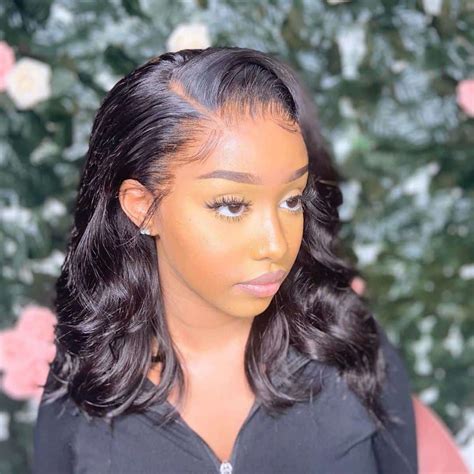What are Hair Sew Ins?
Hair sew ins, also known as weave, are a versatile and popular hair extension technique that involves attaching donor hair to your own natural hair using a needle and thread. This method creates a seamless blend of natural and extension hair, resulting in voluminous, long, and luscious locks.

Benefits of Hair Sew Ins
- Length and Volume: Sew ins add instant length and volume to thin or short hair, transforming your appearance in a matter of hours.
- Versatility: They allow for complete customization in terms of length, color, and texture, enabling you to experiment with different styles.
- Protective: Sew ins shield your natural hair from damage caused by heat styling, chemical treatments, and environmental factors.
- Long-Lasting: With proper care and maintenance, hair sew ins can last for several months, providing you with a low-maintenance alternative to constant salon visits.
- Cost-Effective: Compared to other hair extension methods, sew ins are relatively affordable, making them a cost-effective way to achieve your dream hair.
Types of Hair Sew Ins
There are various types of hair sew ins available, catering to different hair textures, lengths, and styles.
- Machine Sew Ins: This method involves using a machine to sew the hair extensions onto tracks. It is a fast and efficient technique but may not be suitable for all hair types.
- Hand-Tied Sew Ins: This labor-intensive method involves hand-tying the hair extensions onto tracks. It offers a more natural and comfortable feel but takes longer to complete.
- Micro Sew Ins: This technique uses tiny wefts of hair that are sewn onto micro beads. It minimizes damage to natural hair and allows for a more versatile application.
Choosing the Right Hair
Selecting the right hair for your sew ins is crucial for achieving a seamless and natural look.
- Hair Texture: Match the donor hair texture to your own natural hair to ensure a cohesive blend.
- Hair Length: Choose a hair length that complements your facial features and overall body proportions.
- Hair Color: Consider your skin tone and eye color when selecting the hair color to create a flattering and natural effect.
- Hair Quality: Opt for high-quality, ethically sourced human hair that will last longer and maintain its integrity.
Application and Maintenance
The application process for hair sew ins typically involves:
- Sectioning your natural hair into cornrows or braids.
- Sewing the hair tracks onto the cornrows or braids.
- Cutting and styling the extensions to blend with your natural hair.
- Wash your sew ins regularly with a gentle shampoo and conditioner.
- Avoid excessive heat styling.
- Comb and brush your hair gently to prevent tangling and breakage.
- Get regular trims to remove any split ends.
Tips and Tricks
- Use a heat protectant spray before using heat styling tools.
- Sleep on a satin pillowcase to reduce friction and prevent tangling.
- Cover your sew ins when swimming or exercising.
- If you have fine or weak hair, consider using smaller wefts to minimize damage.
Common Mistakes to Avoid
- Over-tightening: Avoid sewing the extensions too tightly, as this can damage your natural hair and cause discomfort.
- Using low-quality hair: Avoid using synthetic or poor-quality hair, as it can lead to tangling, breakage, and a less natural appearance.
- Neglecting maintenance: Regular maintenance is essential for keeping your sew ins looking and feeling their best.
- Improper removal: Always consult a professional to remove your sew ins to minimize damage to your natural hair.
Pros and Cons of Hair Sew Ins
Pros:
- Adds instant length and volume
- Versatility in length, color, and texture
- Protection for natural hair
- Long-lasting
- Cost-effective
Cons:
- Can be uncomfortable if sewn too tightly
- Requires regular maintenance
- May not be suitable for all hair types
- Potential for damage if not applied or removed properly
Table 1: Hair Sew In Costs
| Service | Cost (USD) |
|---|---|
| Machine Sew Ins | $200-$600 |
| Hand-Tied Sew Ins | $400-$1000 |
| Micro Sew Ins | $600-$1500 |
Table 2: Hair Sew In Maintenance Schedule
| Week | Task |
|---|---|
| 1 | Wash and condition hair |
| 2 | Comb and brush hair |
| 3 | Trim split ends |
| 4 | Get a professional trim and style |
Table 3: Common Mistakes to Avoid with Hair Sew Ins
| Mistake | Impact |
|---|---|
| Over-tightening | Damage to natural hair and discomfort |
| Using low-quality hair | Tangling, breakage, and unnatural appearance |
| Neglecting maintenance | Reduced lifespan and damage |
| Improper removal | Damage to natural hair |
Table 4: Tips and Tricks for Hair Sew Ins
| Tip | Benefit |
|---|---|
| Use a heat protectant spray | Prevents heat damage |
| Sleep on a satin pillowcase | Reduces friction and tangling |
| Cover your sew ins when swimming or exercising | Protects hair from damage |
| Use smaller wefts for fine or weak hair | Minimizes damage |
